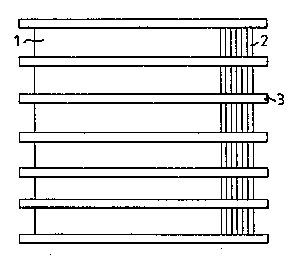Some of the information on this Web page has been provided by external sources. The Government of Canada is not responsible for the accuracy, reliability or currency of the information supplied by external sources. Users wishing to rely upon this information should consult directly with the source of the information. Content provided by external sources is not subject to official languages, privacy and accessibility requirements.
Any discrepancies in the text and image of the Claims and Abstract are due to differing posting times. Text of the Claims and Abstract are posted:
| (12) Patent Application: | (11) CA 2117077 |
|---|---|
| (54) English Title: | A METHOD OF MANUFACTURING A SCREENING DRUM |
| (54) French Title: | METHODE POUR LA FABRICATION D'UN TROMMEL |
| Status: | Deemed Abandoned and Beyond the Period of Reinstatement - Pending Response to Notice of Disregarded Communication |
| (51) International Patent Classification (IPC): |
|
|---|---|
| (72) Inventors : |
|
| (73) Owners : |
|
| (71) Applicants : |
|
| (74) Agent: | SMART & BIGGAR LP |
| (74) Associate agent: | |
| (45) Issued: | |
| (86) PCT Filing Date: | 1992-08-24 |
| (87) Open to Public Inspection: | 1993-03-15 |
| Availability of licence: | N/A |
| Dedicated to the Public: | N/A |
| (25) Language of filing: | English |
| Patent Cooperation Treaty (PCT): | Yes |
|---|---|
| (86) PCT Filing Number: | PCT/SE1992/000572 |
| (87) International Publication Number: | SE1992000572 |
| (85) National Entry: | 1994-03-04 |
| (30) Application Priority Data: | ||||||
|---|---|---|---|---|---|---|
|
2117077 9304797 PCTABS00020
A method of manufacturing a screening drum for the screening of
fibre material. A plane rectangular plate (1) is provided on its
front side with a great number of parallel grooves (2) extending
over the entire plate. A number of supporting strips (3) are
welded on the front side of the plate across the grooves (2). The
plate is slotted (4) from the rear side directly in front of the
grooves. The plate finally is bent to a drum, its front side facing
outward and the slots (4) extending substantially axially.
Note: Claims are shown in the official language in which they were submitted.
Note: Descriptions are shown in the official language in which they were submitted.

2024-08-01:As part of the Next Generation Patents (NGP) transition, the Canadian Patents Database (CPD) now contains a more detailed Event History, which replicates the Event Log of our new back-office solution.
Please note that "Inactive:" events refers to events no longer in use in our new back-office solution.
For a clearer understanding of the status of the application/patent presented on this page, the site Disclaimer , as well as the definitions for Patent , Event History , Maintenance Fee and Payment History should be consulted.
| Description | Date |
|---|---|
| Inactive: IPC from MCD | 2006-03-11 |
| Inactive: IPC from MCD | 2006-03-11 |
| Time Limit for Reversal Expired | 1997-08-25 |
| Application Not Reinstated by Deadline | 1997-08-25 |
| Deemed Abandoned - Failure to Respond to Maintenance Fee Notice | 1996-08-26 |
| Application Published (Open to Public Inspection) | 1993-03-15 |
| Abandonment Date | Reason | Reinstatement Date |
|---|---|---|
| 1996-08-26 |
Note: Records showing the ownership history in alphabetical order.
| Current Owners on Record |
|---|
| AB KNUTSILPLATAR |
| Past Owners on Record |
|---|
| JAN MALM |